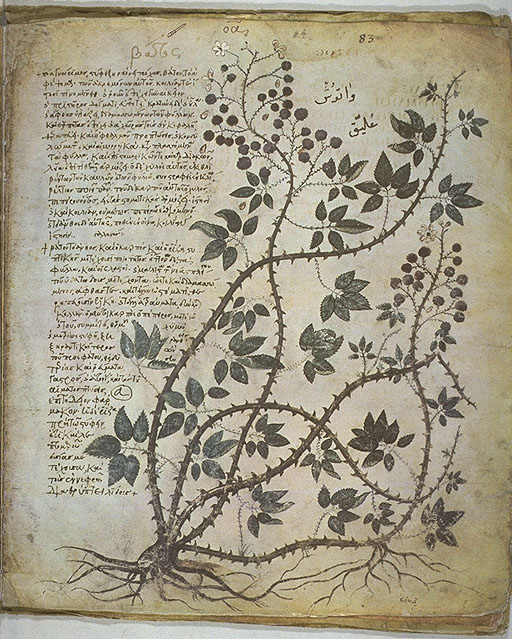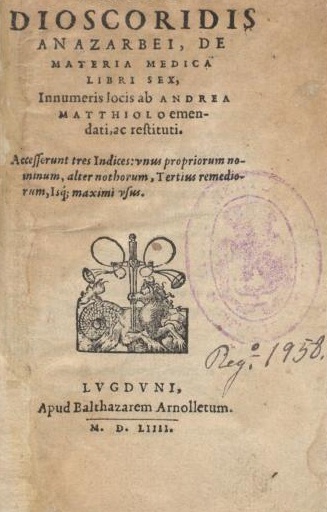|
Anticrates (Spartan)
Anticrates () was a Spartan who, "according to Dioscorides," killed Epaminondas at the Battle of Mantineia in 362 BCE. The descendants of Anticrates are said to have been called ''Machairiones'' (Μαχαιρίωνες) by the Spartans, on account of his having struck Epaminondas with a ''machaira'' (that is a sword or large knife, μαχαίρα), but Pausanias mentions a man named "Machaerion", a Spartan or Mantineian, who was said to have struck the killing blow. Pausanias, ''Description of Greece'' viii.11 §4 Others attribute it to Gryllus, son of Xenophon Gryllus () was the elder son of Xenophon. When the war, which broke out between Elis and Arcadia in 365 BC, on the subject of the Triphylian towns, had rendered a residence at Scillus no longer safe, Gryllus and his brother Diodorus were sent by X .... Notes {{authority control 4th-century BC Spartans ... [...More Info...] [...Related Items...] OR: [Wikipedia] [Google] [Baidu] |
Sparta
Sparta was a prominent city-state in Laconia in ancient Greece. In antiquity, the city-state was known as Lacedaemon (), while the name Sparta referred to its main settlement in the Evrotas Valley, valley of Evrotas (river), Evrotas river in Laconia, in southeastern Peloponnese. Around 650 BC, it rose to become the dominant military land-power in ancient Greece. Sparta was recognized as the leading force of the unified Greek military during the Greco-Persian Wars, in rivalry with the rising naval power of Classical Athens, Athens. Sparta was the principal enemy of History of Athens, Athens during the Peloponnesian War (431–404 BC), from which it emerged victorious after the Battle of Aegospotami. The decisive Battle of Leuctra against Thebes, Greece, Thebes in 371 BC ended the Spartan hegemony, although the city-state maintained its Independence, political independence until its forced integration into the Achaean League in 192 BC. The city nevertheless recovered m ... [...More Info...] [...Related Items...] OR: [Wikipedia] [Google] [Baidu] |
Pedanius Dioscorides
Pedanius Dioscorides (, ; 40–90 AD), "the father of pharmacognosy", was a Greek physician, pharmacologist, botanist, and author of (in the original , , both meaning "On Medical Material") , a 5-volume Greek encyclopedic pharmacopeia on herbal medicine and related medicinal substances, that was widely read for more than 1,500 years. For almost two millennia Dioscorides was regarded as the most prominent writer on plants and plant drugs. Life A native of Anazarbus, Cilicia, Asia Minor, Dioscorides likely studied medicine nearby at the school in Tarsus, which had a pharmacological emphasis, and he dedicated his medical books to Laecanius Arius, a medical practitioner there. Though he writes he lived a "soldier's life" or "soldier-like life", his pharmacopeia refers almost solely to plants found in the Greek-speaking eastern Mediterranean, making it likely that he served in campaigns, or travelled in a civilian capacity, less widely as supposed. The name Pedanius is Roman, ... [...More Info...] [...Related Items...] OR: [Wikipedia] [Google] [Baidu] |
Dioscorides (poet)
Pedanius Dioscorides (, ; 40–90 AD), "the father of pharmacognosy", was a Greek physician, pharmacologist, botanist, and author of (in the original , , both meaning "On Medical Material") , a 5-volume Greek encyclopedic pharmacopeia on herbal medicine and related medicinal substances, that was widely read for more than 1,500 years. For almost two millennia Dioscorides was regarded as the most prominent writer on plants and plant drugs. Life A native of Anazarbus, Cilicia, Asia Minor, Dioscorides likely studied medicine nearby at the school in Tarsus, which had a pharmacological emphasis, and he dedicated his medical books to Laecanius Arius, a medical practitioner there. Though he writes he lived a "soldier's life" or "soldier-like life", his pharmacopeia refers almost solely to plants found in the Greek-speaking eastern Mediterranean, making it likely that he served in campaigns, or travelled in a civilian capacity, less widely as supposed. The name Pedanius is Roman, sug ... [...More Info...] [...Related Items...] OR: [Wikipedia] [Google] [Baidu] |
Epaminondas
Epaminondas (; ; 419/411–362 BC) was a Greeks, Greek general and statesman of the 4th century BC who transformed the Ancient Greece, Ancient Greek polis, city-state of Thebes, Greece, Thebes, leading it out of Spartan subjugation into a pre-eminent position in Greek politics called the Theban Hegemony. In the process, he broke Spartan military power with his victory at Battle of Leuctra, Leuctra and liberated the Messenian helots, a group of Peloponnesian Greeks who had been enslaved under Spartan rule for some 230 years following their defeat in the Third Messenian War ending in 600 BC. Epaminondas reshaped the political map of Greece, fragmented old alliances, created new ones, and supervised the construction of entire cities. He was also militarily influential and invented and implemented several important battlefield tactics. Xenophon, the historian and contemporary, is the main source for Epaminondas's military prowess, and Xenophon describes his admiration for him in h ... [...More Info...] [...Related Items...] OR: [Wikipedia] [Google] [Baidu] |
Battle Of Mantinea (362 BC)
The Battle of Mantinea was fought on 4 July 362 BC between the Thebans, led by Epaminondas and supported by the Arcadians, Argives, Messenians, Thessalians, Euboeans and the Boeotian league against the Spartans, led by King Agesilaus II and supported by the Eleans, Athenians, and Mantineans. The battle was to determine which of the two alliances would dominate Greece. However, the death of Epaminondas and his intended successors would cost Thebes the military leadership and initiative to maintain Theban supremacy in the region. Similarly, the Spartans were weakened by yet another defeat and loss of troops. Epaminondas' death coupled with the impact on the Spartans of yet another defeat weakened both alliances, and paved the way for Macedonian conquest led by Philip II of Macedon. Background During the Peloponnesian War (431–404 B.C.), Thebes allied with the Spartans against Athens. After Sparta's victory against Athens, the Thebans were told that their forts were ... [...More Info...] [...Related Items...] OR: [Wikipedia] [Google] [Baidu] |
Pausanias (geographer)
Pausanias ( ; ; ) was a Greek traveler and geographer of the second century AD. He is famous for his '' Description of Greece'' (, ), a lengthy work that describes ancient Greece from his firsthand observations. ''Description of Greece'' provides crucial information for making links between classical literature and modern archaeology, which is providing evidence of the sites and cultural details he mentions although knowledge of their existence may have become lost or relegated to myth or legend. Biography Nothing is known about Pausanias apart from what historians can piece together from his own writing. However, it is probable that he was born into a Greek family and was probably a native of Lydia in Asia Minor. From until his death around 180, Pausanias travelled throughout the mainland of Greece, writing about various monuments, sacred spaces, and significant geographical sites along the way. In writing his '' Description of Greece'', Pausanias sought to put together ... [...More Info...] [...Related Items...] OR: [Wikipedia] [Google] [Baidu] |
Mantineia
Mantinea (; ''Mantineia''; also Koine Greek ''Antigoneia'') was a city in ancient Arcadia, Greece, which was the site of two significant battles in Classical Greek history. In modern times it is a former municipality in Arcadia, Peloponnese, Greece. Since the 2011 local government reform it is part of the municipality Tripoli, of which it is a municipal unit. Its seat was the village of Nestani (pop. 486 in 2011). It is located in the northeastern part of Arcadia. The municipal unit has a land area of 205.393 km2 and a population of 1,693 inhabitants (2021). Its largest other towns are Artemisio, Loukas, and Kapsas. History The city emerged from the amalgamation of several neighbouring villages around 500 BC. Its patron god was Poseidon. It was a large city with numerous temples. The fortifications originally were polygonal. The temple of Artemis Hymnia, just on the north of the city, is mentioned by Pausanias. Diotima, who influenced Socrates, supposedly was a ... [...More Info...] [...Related Items...] OR: [Wikipedia] [Google] [Baidu] |
Description Of Greece
''Description of Greece'' () is the only surviving work by the ancient "geographer" or tourist Pausanias (geographer), Pausanias (c. 110 – c. 180). Pausanias' ''Description of Greece'' comprises ten books, each of them dedicated to some part of mainland Greece. He is essentially describing his own travels, and large parts of Greece are not covered, including the islands. His tour begins in Attica () and continues with Athens, including its suburbs or demes. Then the work goes with Ancient Corinth, Corinthia (), Laconia (), Messenia (ancient region), Messenia (), Ancient Elis, Elis (), Achaea (ancient region), Achaea (), Arcadia (region), Arcadia (), Boeotia (), Phocis (ancient region), Phocis (), and Ozolian Locris (). The work is rather erratic on described topography; its main interest is the cultural geography of ancient Greece, especially its religious sites, in which Pausanias not only mentioned, and occasionally described, architectural and artistic objects, but a ... [...More Info...] [...Related Items...] OR: [Wikipedia] [Google] [Baidu] |
Gryllus, Son Of Xenophon
Gryllus () was the elder son of Xenophon. When the war, which broke out between Elis and Arcadia in 365 BC, on the subject of the Triphylian towns, had rendered a residence at Scillus no longer safe, Gryllus and his brother Diodorus were sent by Xenophon to Lepreum for security. Here he himself soon after joined them, and went with them to Corinth. Both young men served with the Athenian cavalry at the Battle of Mantinea, in 362 BC, where Gryllus was slain in the fighting. It was he, according to the account of the Athenians and Thebans, who gave Epaminondas his mortal wound, and he was represented in the act of inflicting it in a picture of the battle by Euphranor in the Cerameicus. The Mantineians also, though they ascribed the death of Epaminondas to a "Machaerion", yet honored Gryllus with a public funeral and an equestrian statue, and reverenced his memory, as the bravest of all who fought on their side at Mantineia. According to Diogenes Laërtius Diogenes Laërtius ( ; ... [...More Info...] [...Related Items...] OR: [Wikipedia] [Google] [Baidu] |




